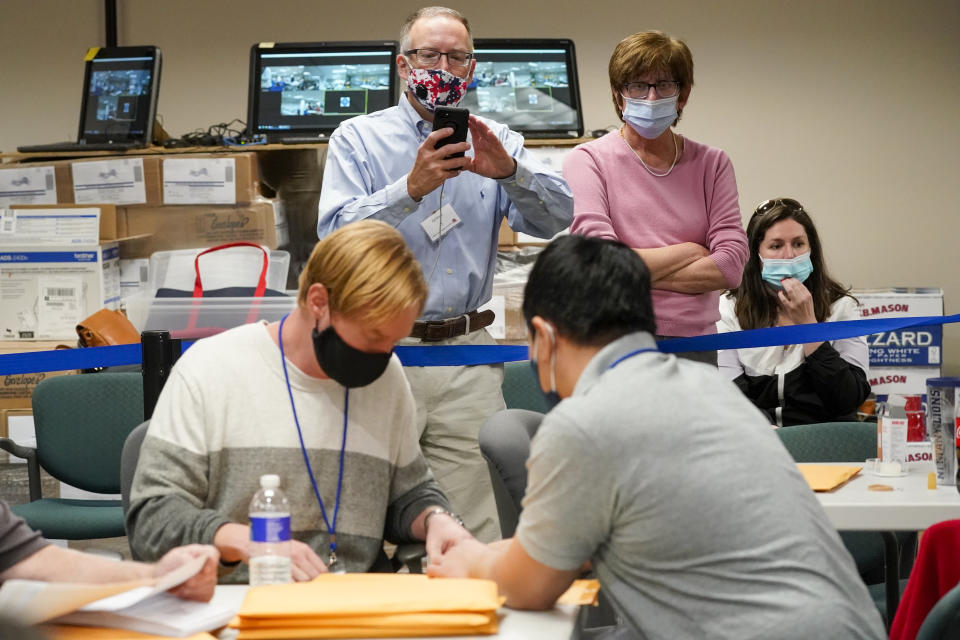Why some pollsters got the 2020 elections wrong: Marist College director
The pollsters needed to get it right in 2020, especially after getting it so wrong in the 2016 presidential election.
On Saturday, the Associated Press said Joe Biden won the election after it called Pennsylvania for the former Vice President. Biden surpassed the 270 electoral votes needed to win the race with Pennsylvania after getting Wisconsin, Michigan and Arizona, battleground states that Trump carried in 2016.
“Our numbers, we did four battleground states. Two were actually very good,” Lee Miringoff, director of the Marist College Institute for Public Opinion, told Yahoo Finance Live a day before the presidential election was called, referring to Pennsylvania and Arizona, which he said Marist got right. “The other two [Florida and North Caroline] were within the margin of error. But there's a lot of pollsters who had double digit misses this time.”
More than 101.1 million early votes were cast in person and by mail before the polls even opened on Election Day, making voter turnout in the 2020 presidential election the highest in more than a century.
“It was a very, very tough polling environment because we had people voting, unprecedented numbers. We had people voting in-person early. And we had people voting on Election Day itself. And those three groups had very different preferences and we didn’t know what the denominator was; how big would each one be in our recipes,” said Miringoff. “So it was a very hard environment. Some of the polls did well, but some of them touted it in the wrong direction. And that is open for criticism.”

‘It’s a science, but it’s an art too’
Polls are not perennially wrong. They did a good job in the 2018 midterms, but they do seem to have a tough time getting it right when President Donald Trump is on the ballot, which was mainly the case in 2016.
Some pundits say the “shy Trump voter” factor could be at work. Are some people uncomfortable admitting to a pollster that they support Trump and if so, how do pollsters account for that?
Miringoff said pollsters should wait until all the counting is completed to see where the errors were. “There were a lot of pollsters who were not using scientific approaches, and science is messy,” he said.
At Marist, they’re recalling people they spoke to in the four battleground states they polled to find out if they did in fact vote, which method of voting they used, and who they ultimately voted for.
“Did what we think was going to happen really happen, based on the people we talked to?” he said. “Everybody gets caught up in who’s ahead and by how much. It’s a science, but it’s an art too. Maybe if we talked in terms of what the error of margin really was, which is both directions — so if you have a 4 point error margin, it’s really an 8 point range, then you don’t necessarily have everybody ahead if they’re 3 or 4 points ahead.”
Pollsters will have to examine if they were working with bad samplings that skewed the results. In 2016, for example, pollsters determined they didn’t poll enough males and non-college educated people. They say this time around, they might find that rural voters were undercounted.
Washington Post media columnist Margaret Sullivan recently wrote that polling is “irrevocably broken” and that “we should never again put as much stock in public opinion polls, and those who interpret them, as we’ve grown accustomed to doing.”
So, it’s back to the drawing board for the pollsters, who have the next four years to get it right with a public that’s quickly losing patience — and trust.
Alexis Christoforous is an anchor and reporter at Yahoo Finance. Follow her on Twitter @AlexisTVNews.
Follow Yahoo Finance on Twitter, Facebook, Instagram, Flipboard, SmartNews, LinkedIn, YouTube, and reddit.
Find live stock market quotes and the latest business and finance news
For tutorials and information on investing and trading stocks, check out Cashay
